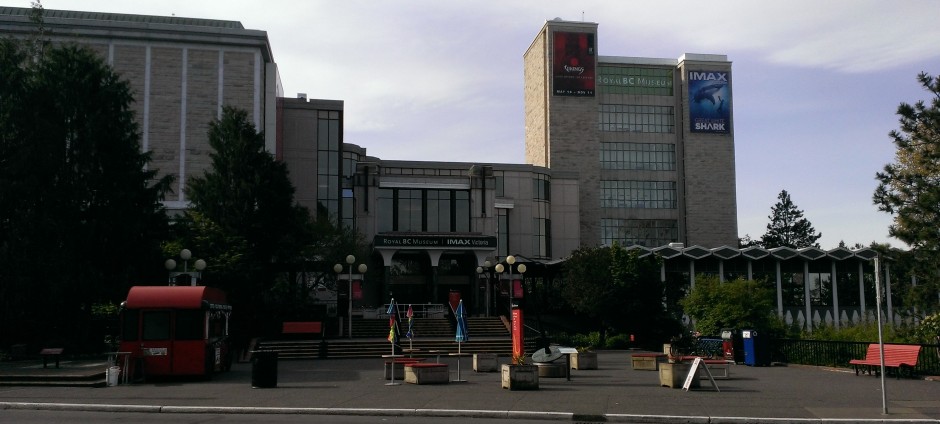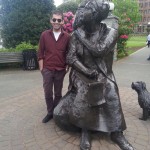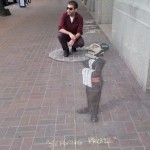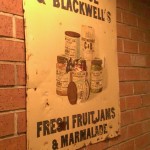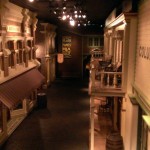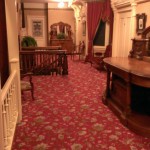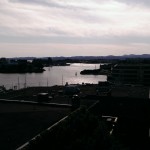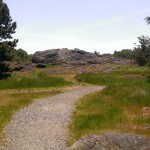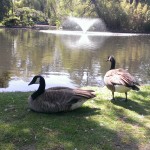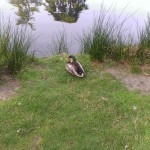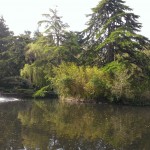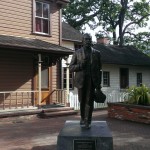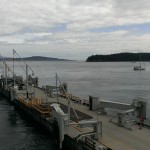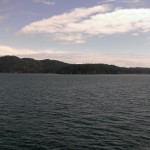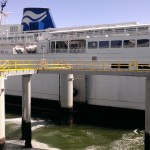Well that went by fast! I had to check the calendar this morning and then recheck it to make sure it really had been three weeks. They say time goes by fast when you’re having fun. Well if that’s the case teaching and learning are definitely for me since time has been going by REALLY FAST whenever I’m engaged in those activities.
On Friday afternoon I left the museum with mixed feelings; I was disappointed that it was over but at the same time excited about continuing my lifelong journey of learning. My time at the museum has helped me continue to develop my own personal understanding of the meaning of Education. That is, education happens beyond the walls of a traditional classroom filled with 30 desks and a whiteboard. The term merely represents a mask of the many faces it has; teaching and learning can happen anywhere at any time. Museums, like the Royal BC museum, are just one of those faces hiding behind under the mask.
My final week was an interesting one to say the least-filled with inquiry, lesson planning, Kids Club, and Preschool kids! On Monday both Sean (the other student teacher assigned to the museum) and I joined some of the staff in the Learning department on a trip to a school in Nanaimo. A grade 6/7 teacher had invited the museum to come and learn about the inquiry program she runs in her class. In each semester the students work on a personal inquiry project based around a general inquiry question she comes up with. The theme for this semester was based around sustainability-some of the projects the students were working on included birds and the environment, the Florida Everglades, and cleaning the environment.
The idea of inquiry is a fascinating one for me. Honestly, up until the B.Ed. program at UBC I hadn’t heard much of the term let alone give it any thought, which is interesting since inquiry has been around for a long time. It’s clear though many teachers aren’t still ready to accept or at least try it in their classrooms given by the lack of any inquiry learning during my elementary/secondary schooling (as well as from what I’ve observed at my practicum school). On one end it’s understandable given from what I witnessed Monday-a lot of work and effort is required to successfully run an inquiry based class. However, at the same time if we’re not putting in the time and effort to develop critically engaging lessons how can we expect our students to put in the time and effort required to be successful?
It was amazing to see firsthand the results of running an inquiry class. A few of the students presented their projects and they were some of the best I’ve ever seen kids do! One student had done an absolutely AMAZING 15 minute presentation on the Florida Everglades and how it relates to sustainability. To help the museum as well as Sean and I understand the secrets to the success she has had running this program we asked the students what they like most about inquiry and why they think it’s been successful for them. Their feedback was not only helpful to the museum for what they’re trying to do (more inquiry based field trip programs) but also helpful to a starting teacher like me. For example, it’s one thing to say, as a teacher, lessons should be relatable to the students, should involve practical examples, and you need to create a class environment that feels like a community. However it’s another to hear the students themselves say that.
As a teacher beginning my career I am continually developing and looking for ideas to make my lessons more engaging for my students. Inquiry is something I have been thinking about implementing ever since I first learned about it at UBC and I have gained valuable insight into doing that as a result of Monday’s trip. It’s of course a bit more difficult, as a secondary teacher, to replicate the success she has with her class only because I see my students for an hour and twenty minutes a day for a semester whereas she sees them the whole day, every day, for the entire school year. It is however far from impossible and a challenge I’m looking forward to taking on when I begin my first official teaching position.
The next day Sean and I helped run some activities for a class of thirty preschool students on a filed trip. This was a unique learning experience for me; the youngest group of kids I had interacted with in a teaching position before were grade 3 students at a summer science camp. Working with kids that young obviously requires a different approach then what I’m use to with secondary students-so I learned a lot from it. For example during activities some kids would tell me “I’m 3!” or regarding the photo backdrop of the seashore diorama “Is the water real?-can we go there?” At that age you just focus on teaching the BIG picture and not worry about any of the minor details.
The rest of the week I worked on finishing/editing my lesson plans-which we learned are going to be the pioneers of the new database the museum is developing. So Cool! I also worked with the museum’s Kids Club-the kids were given a tour of how security works at the museum by the head of security. I now know where some of the hidden cameras are! But not all of them of course-trade secrets and all.
As I sit here and conclude my reflection for my final week of my CFE practicum I think back to the reasoning behind this part of the B.Ed. program-to participate in an educational setting outside of a traditional classroom and to further our development of becoming educators. I can safely say that I have continued to grow and improve as an educator over these past three weeks. The friendships I’ve made, the engaging conversations I’ve had with some of the most dedicated educators I’ve ever met, the experiences I’ve been a part of-all these have been critical in furthering my development as an educator.
A special thank you to the Royal BC Museum for letting me be a part of their community for the past three weeks and a thank you to UBC for providing me with that opportunity.
